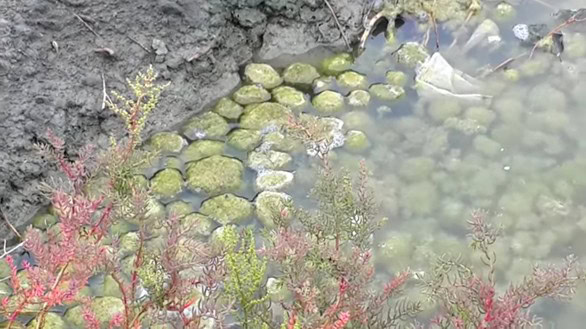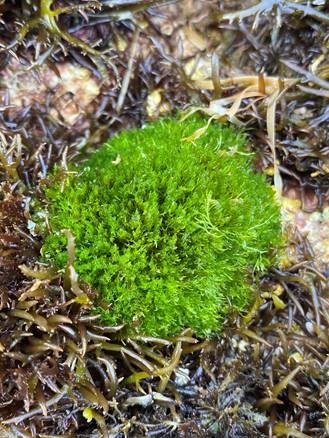Cladophora
algae identification
Cladophora is a genus of filamentous green algae commonly found in freshwater and marine environments worldwide. Cladophora algae consist of long, unbranched filaments that radiate outward from a central point, giving them a bushy or tufted appearance. The filaments are composed of cylindrical cells arranged end to end, with chloroplasts containing chlorophyll responsible for photosynthesis, giving the algae its green colouration. These algae typically attach to submerged substrates such as rocks, sediments, or aquatic vegetation, although they can also float freely in the water column under certain conditions.
- Tufted or bushy appearance
- Attached to rocks or substrate
- Green in colour
- Spirogya
- Spirogyra will form dense mats on the surface of the water and appear more long and stringy
Cladophora algae play important ecological roles, such as providing habitat and food for aquatic organisms
What does Cladophora look like?
Disadvantages of Cladophora
Cladophora algae thrive in nutrient-rich environments, particularly those with elevated levels of nitrogen and phosphorus, which stimulate their growth.
Under favourable conditions, Cladophora algae can proliferate rapidly, forming extensive mats or colonies that cover large areas of the substrate or water surface. These dense aggregations of algae can have significant ecological impacts, including shading out submerged vegetation, altering habitat structure, and affecting oxygen levels and nutrient cycling.
treatment
Coptrol – Algaecide control designed to kill algal cells. Use on mild to severe algae blooms.
GreenClear Pond – This treatment is designed for manmade enclosed fish ponds only. GreenClear Pond targets debris and sludge and is safe for fish.
prevention options
Aquatic Blue Dye – Blue dye that may reduce temperature of the water body by reducing UV light penetration. This may then increase oxygen saturation.
Phoslock – Phosphorous is the main food source for algae. By reducing the nutrient input, algae do not have enough food to replicate.
Barley Straw Bales and Barley Straw Extract – Barley Straw works to suppress the future growth of algae.
Waterbac – Beneficial Bacteria helps to reduce excess nutrients in the water body which may lead to an algal bloom.



